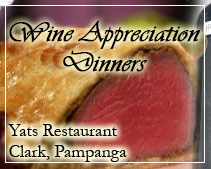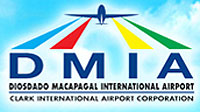ABOUT PAMPANGA PROVINCE – 11July21
PAMPANGA
The name “Pampanga” comes from the word pangpang meaning riverbank, a fitting name for a flat country crisscrossed by a hundred small branches of the Pampanga River. The province lies in the southern portion of the central plains of Luzon. It is bounded on the east and southeast by Bulacan, on the north by Tarlac and Nueva Ecija, on the west by Zambales and on the southwest by Bataan. Towards the south, Pampanga opens up to Manila Bay. The terrain is flat except for some hills in the northwest, which form part of the Zambales Range, and for Mount Arayat in the northeast while along the bay are extensive swamplands. The climate is very distinct with the rainy season from May to October and the dry season from November to April.
HISTORY
It has been popularly believed and theorized that the Kampampangans, linguistically distinct from the Tagalogs who surround them, are descended from migrants from the Malang Region in Central Java sometime in the distant past. Whether or not they did come from Java, thriving settlements existed along the marshy banks of the coast and the rivers when Spanish conquistadors came in 1571.
When the Spaniards did come in that year, the Pampangans initially refused to submit to the conquerors and chose to resist them. Martin de Goiti was sent to reduce the recalcitrant people of Pampanga. After conquest was finally achieved, the province of Pampanga was established shortly thereafter. Originally, Pampanga comprised the whole of the Central Luzon region. The subsequent creation of other provinces like Bataan, Nueva Ecija, and Tarlac, reduced the size of the province.
During the Spanish period, Pampanga was an important source of food, forced labor and lumber for the Spanish colony. Rice, which was produced in great abundance, was levied as tribute. In the 17th century, there were two great disturbances that rocked the province. In 1645, Francisco Maniago led a revolt against the tribute payments being exacted by the colonial officials. In 1660, the forces of Melchor de Vera, under the orders of Andres Malong of Pangasinan, tried to incorporate Pampanga into a Pangasinan-based kingdom but were thwarted at Magalang. Pampanga was one of the first provinces to join the revolution of 1896 and San Fernando served as a temporary capital of the Philippine Republic in 1899.
During the American period, Clark Air Base, one of the largest bases outside continental United States, was erected in northern Pampanga. This base provided the United States an important front position in East Asia and even after Philippine independence in 1946, it was retained because of its strategic importance.
In the 1940s and 1950s, the province was a hotbed of the armed socialist movement called the Hukbalahaps. The movement fed on agrarian problems resulting from the concentration of land in the hands of a few families. To address this problem, the national government embarked on an agrarian reform program, which was implemented during the time of President Diosdado Macapagal, a Pampango. The province was one of the earliest areas placed under agrarian reform.
In 1991, Mount Pinatubo erupted causing widespread destruction in northwestern Pampanga and continued threats by destructive lahar flows on low-lying towns. The Clark Air Base was abandoned by the United States as a result of the eruption. The biggest single project, the Mega Dike, was erected in Pampanga to contain the lahar and save the towns of the province. Clark Air Base, on the other hand, was rehabilitated and was converted into a special economic zone.
PEOPLE, CULTURE AND THE ARTS
The Pampangos share the general culture and traditions of the lowland Christian Filipinos, especially of their Tagalog neighbors to the east and south. However, they speak a distinct language, which is a source of ethnic pride. Spanish chroniclers and early anthropologists have remarked on the distinctiveness of that language and they have proposed theories that the Pampangos may have come to the Philippines from Java or elsewhere in Southeast Asia.
The Pampangos apply themselves to the same industries as the Tagalogs but are renowned for certain crafts for which they excel. They are exceptional jewelers and goldsmiths, as well as furniture makers and woodcarvers. Antique jewelry and furniture from Pampanga are considered valuable heirlooms by Filipino families and as priced possessions by antique collectors.
Pampangos are renowned throughout the archipelagos as excellent cooks. They have ingeniously incorporated indigenous, Spanish and Chinese elements into their cuisine that have made the Pampanga food preparation and culinary arts both exotic and sumptious. Among the more known specialities of the Pampangos include buro, which is meat, fish or vegetables preserved in brine or fermented with rice, tapa, or dried beef or venison, tocino, or cured pork, longaniza or spiced pork sausages, aligi, or crab fat, and sisig, or sizzling pig cheeks.
The province of Pampanga had been held under the influence of the Catholic Church since the beginning of Spanish colonization. Some of the most colorful and interesting observances are connected with Christian holidays. During Good Friday, several towns in Pampanga hold atonement rites. Masked flagellants parade in the streets of beating their bare backs with whips and kneel before the church. Others are “crucified” onto wooden crosses in passion plays that mark the important Christian day.
Every year, during Christmas time, Pampanga becomes the hub of a thriving industry centered on the making of colored lanterns alit with blinking patterns of light. On the 24th of December, the provincial capital, San Fernando becomes the focal point of the Giant Lantern Festival. A kaleidoscope of lights and tinsel from giant lanterns come together to compete and showcase the ingenuity of the Pampango.
The province also boasts of some of the most beautiful examples of colonial church architecture in the Philippines. The churches of Betis , Apalit, Bacolor, and Angeles stand out because of the designs and embellishments that were used in adorning the Christian houses of worship.
TRADE AND INVESTMENTS
Pampanga is taking center stage as the country shifts into industrial high gear. With 2,181 square kilometers of mostly rich arable land, the province has always been a net exporter of food products like rice, sugar, vegetables and fruits as well as poultry, livestock and inland fish products. It is also richly blessed with a highly skilled and highly educated resource pool of manpower, with a population (1995) of 1,500,000 who have a tradition of industrial pursuit especially in the fields of woodcraft, food processing, ceramics, metalworking and decorative crafts.
An excellent network of good roads covers the entire province and connects to the main arterial highway to Manila and Olongapo City. An international airport is located within the Clark Special Economic Zone, while other utilities such as power, telecommunications and potable and irrigated water extensively cover the entire province and are readily available for industries and businesses.
In spite of the destruction caused by the eruption of Mount Pinatubo in 1991 and the continuous threat of lahar over vast swathes of the province, agriculture remains a viable area of opportunity. With ready and accessible markets capable of absorbing production, shifting to high value crops and agricultural production is promising. Vegetable, fruit and cut flower production are some of the potential fields of development. The province also boasts of a tradition of food preparation and with a good source of raw materials, food processing will thrive within the province.
The old agricultural landscape of Pampanga is also fast changing in the face of rapid industrialization. The province is set midway between the Subic Bay Metropolitan Area and Metro Manila and there are large tracts of land that can accommodate industrial expansion. Manufacturing, light and heavy industry can take advantage of Pampanga’s excellent location, developed infrastructure and highly skilled manpower. The Clark Special Economic Zone answers the need to provide adequate facilities to potential investors. Investments in aviation-related industries, electronics, semi-conductor and light to medium technology based industries are highly encouraged.
Tourism is also fast becoming a major industry in Pampanga. The province is a convenient center to explore and enjoy the entire Central Luzon region. Clark is focal to this developing sector, with the operation of first rate hotels, resorts, gaming establishments and golf courses. Further investments in tourism-related activities and support services are necessary to meet the ever-increasing demands of local and foreign tourists.
MAJOR PRODUCTS
Farming and fishing , sugarcane, rice, corn rootcrops, vegetables and fruit trees, bangus, carps, shrimps, crabs and other marine products
NATURAL RESOURCES
Clay, gravel, sand, copper, agricultural lands, wetlands
Source: http://www.islandsaccommodations.com/places/pampanga.htm
Manila residents and tourists spending a vacation in Philippines prefer to travel out of town from Manila to the north to visit Subic, Pampanga, Angeles City and Clark Philippines. While many areas of the Philippines are plagued by crime and security concerns, Clark continues to impress the travel and tourism observers with its immaculately low crime records. Other features of Clark that attract family tourists and those visitors that are health sensitive include low pollution, peace and quiet ambiance and a most welcome absence of traffic congestion.
Many are selling off their assets to start a new life in Philippines, taking advantage of the standard-of-living differential to start a business or just enjoy living in a tropical country. With careful planning, the move to Philippines can work out brilliantly or it can be a painful mistake.
This web site contains articles and information that will be helpful to visitors, residents and tourists traveling out of town from Manila on a short getaway to Subic, Angeles City, Pampanga and Clark Philippines. There are several web sites that contain information that might also be pertinent to what is happening in North Luzon.
For assistance with organizing and planning weddings and garden receptions, log on to http://www.PhilippinesWeddingVenue.com
For assistance with lodgings, accommodations, hotels and resorts near Manila in Subic, Pampanga, Angels City and Clark Philippines log on to http://www.HotelClarkPhilippines.com
While in Clark, one might as well add to the itinerary a visit to the famous Clark Wine Center, the largest wine shop in Philippines which offers over 2000 selections of fine vintage wine from all wine regions, vintages spanning over 50 years covering all price ranges.
http://www.ClarkWineCenter.com
If this article about Clark is useful to you, please click here to contact us to tell us what more you wish to know about this article or Clark Philippines, which can be something about Clark investment, about Clark resorts, about Clark Swimming and Leisure or simply general news about Clark.
Please send questions to Editor@ClarkPhilippines.com. Leave your name, email address, contact numbers and we will get back to you as soon as possible. Information received will not be disclosed.













